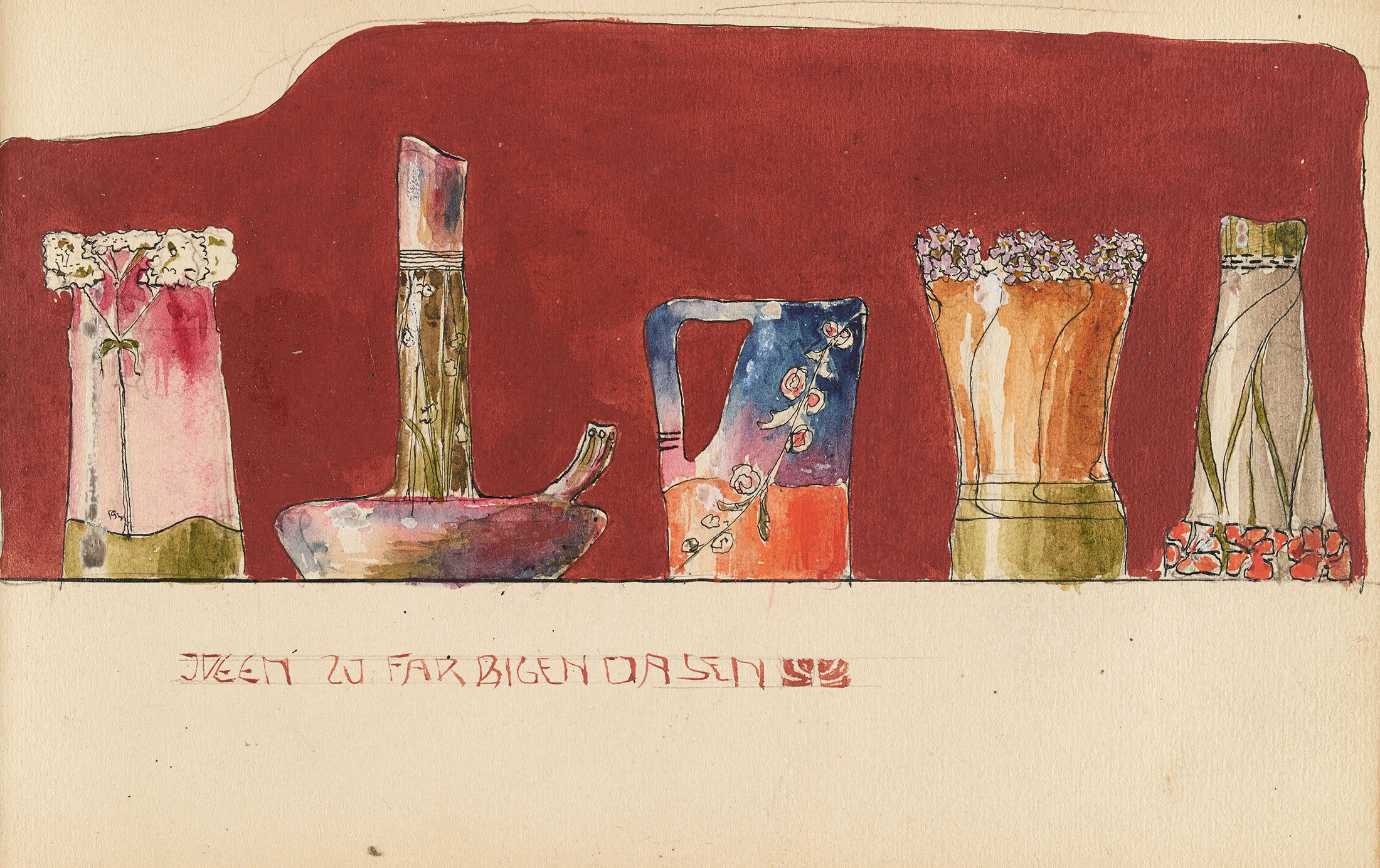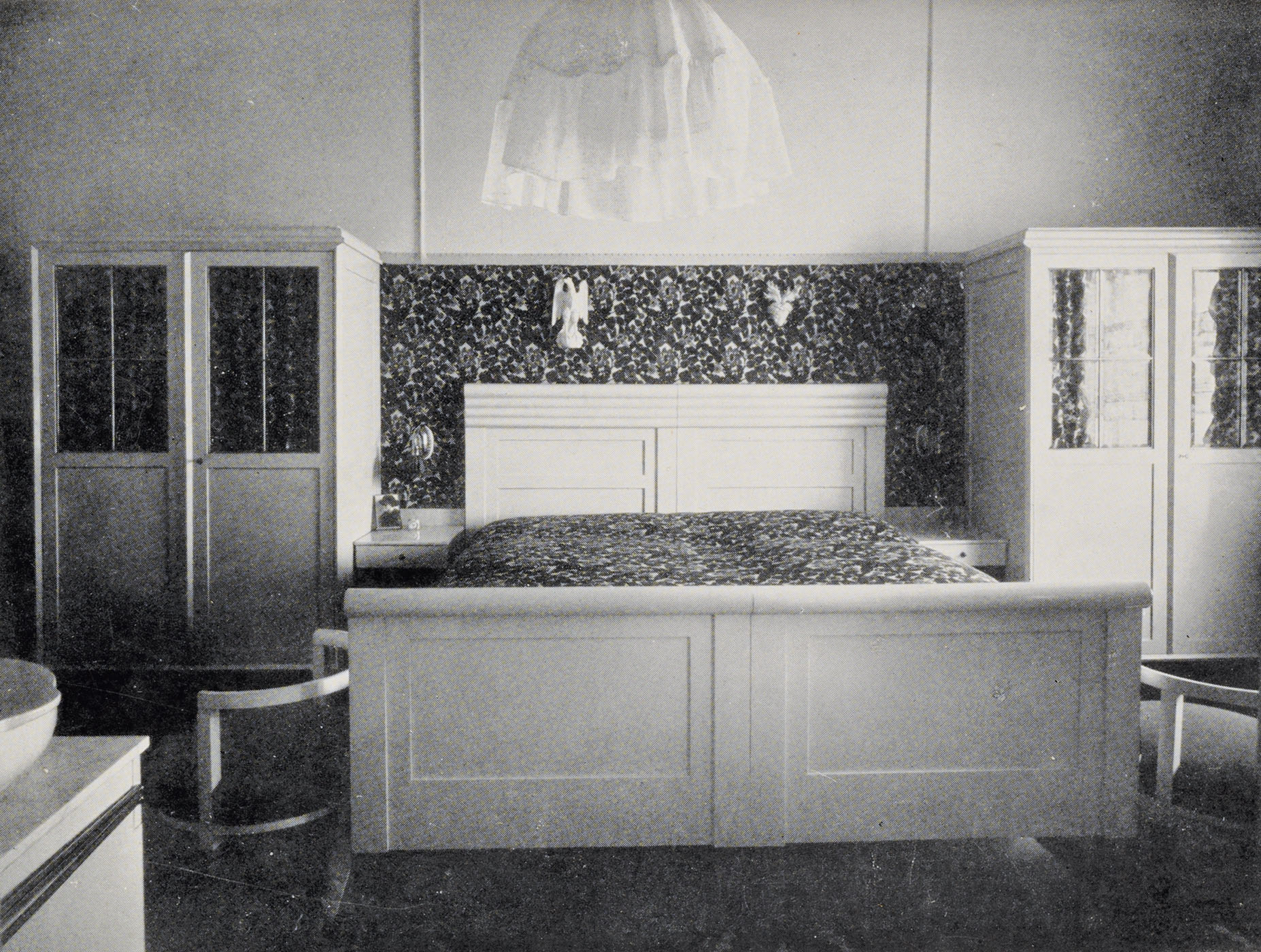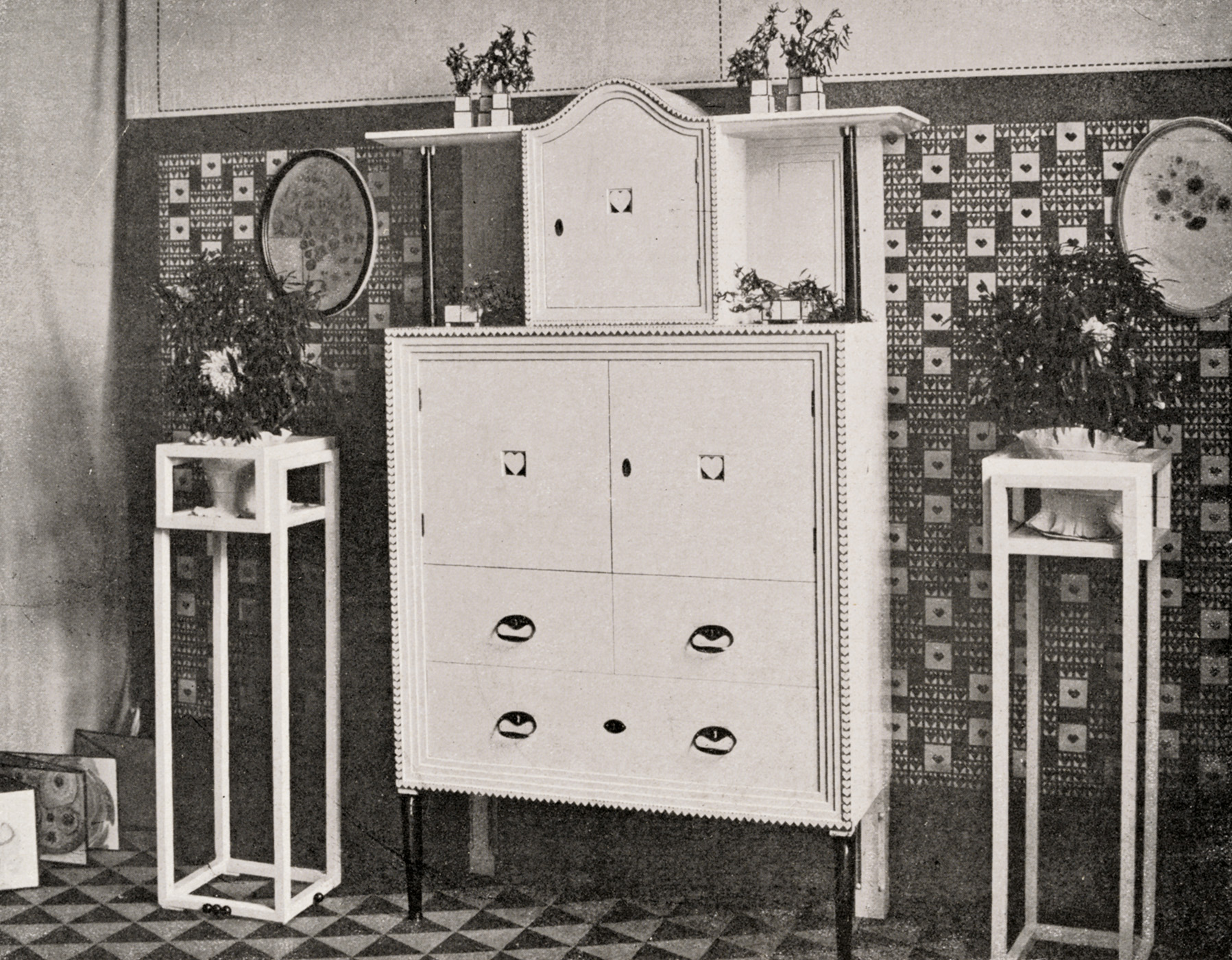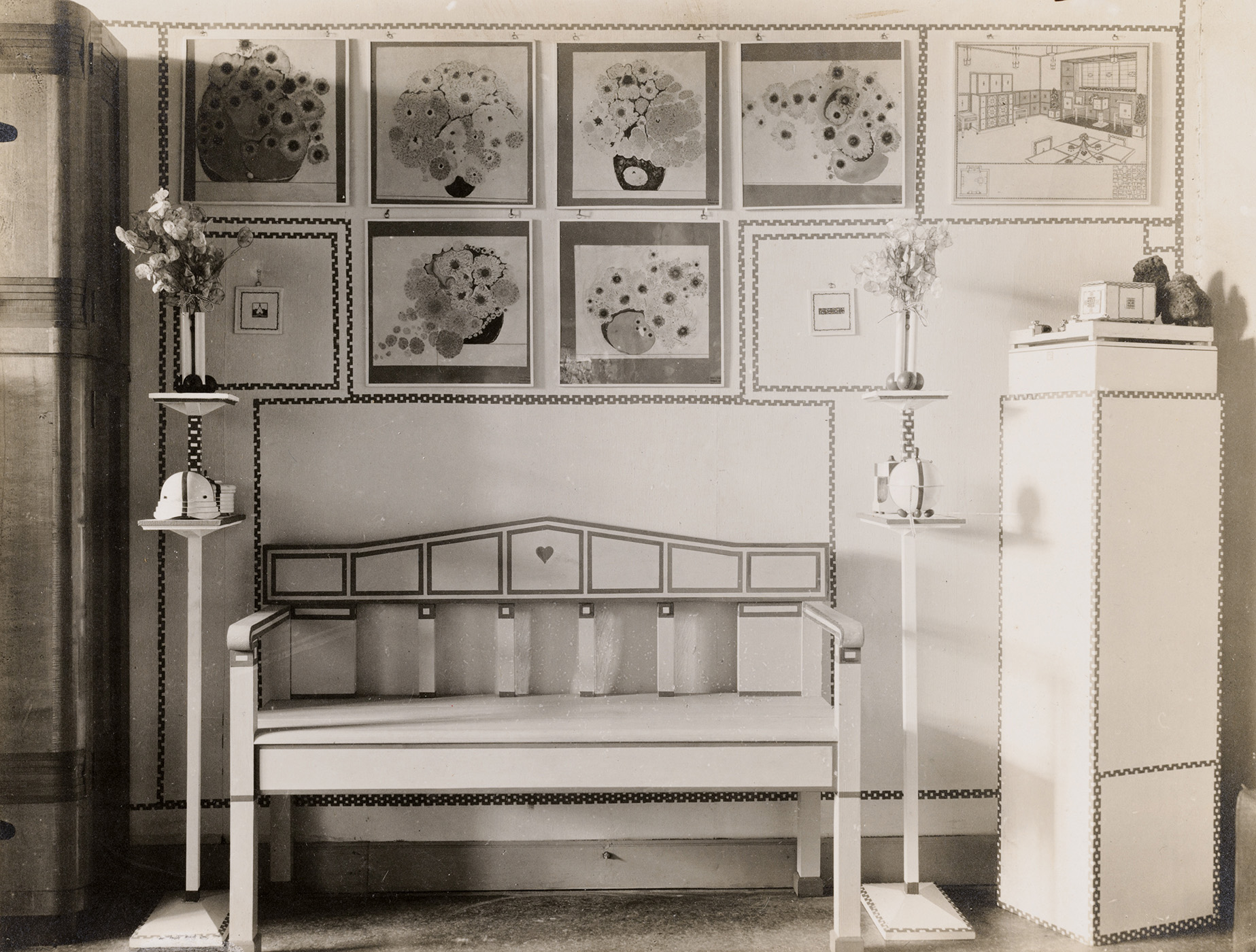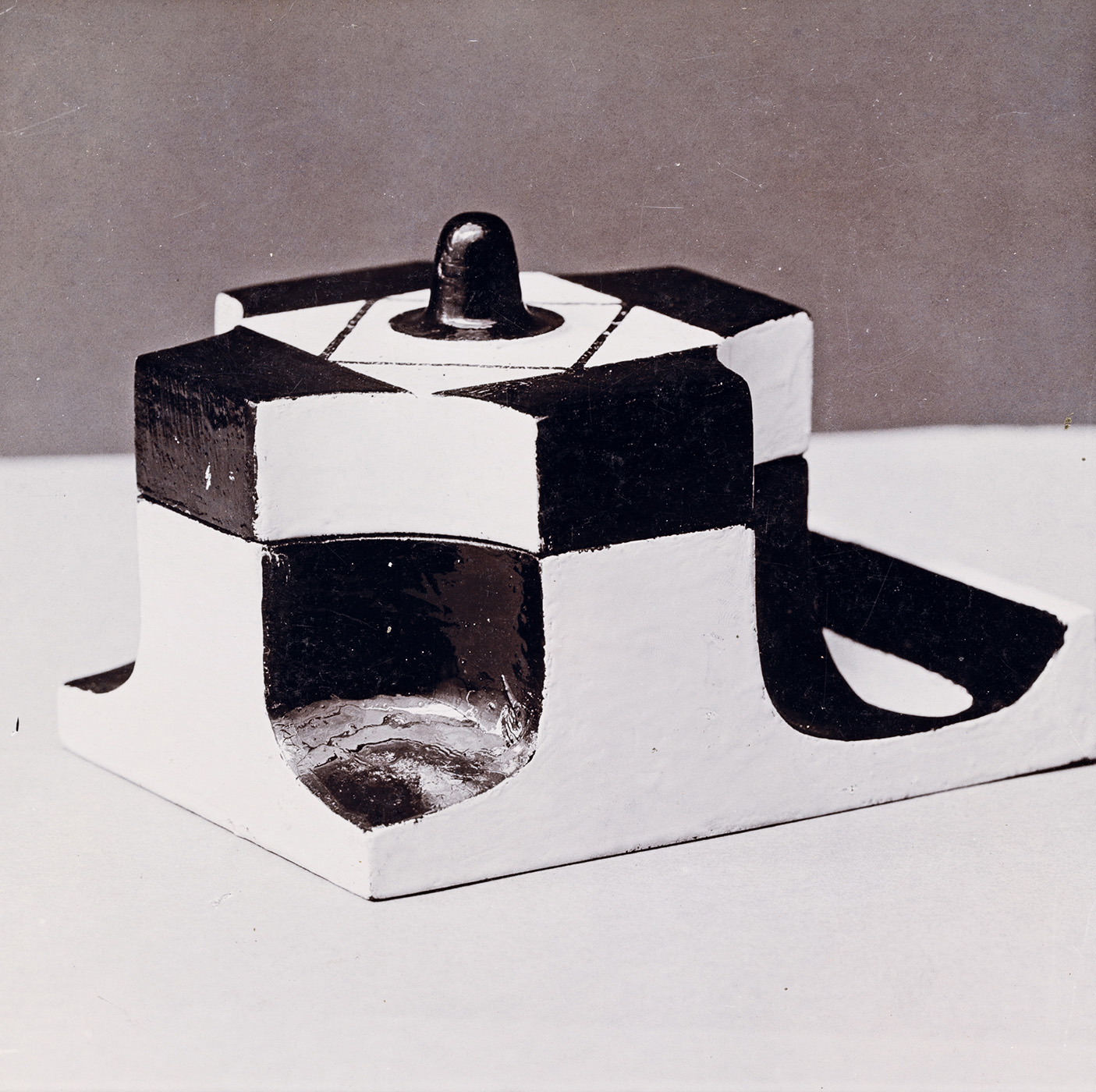Scarcely any other pupil of Otto Wagner proved to be so multifaceted in his designs for furniture, arts and crafts, fashion, jewelry and concepts for entire décors as did Emil Pirchan. It was one of Pirchan’s many talents to use simple forms to create objects which on the one hand are clearly identifiable and on the other evince extraordinary characteristics. Situated at the beginning of his design career clearly in the tradition of Otto Wagner, his second cousin Josef Hoffmann or the Secessionist movement in Vienna, Pirchan nonetheless already employed a sculptural language which pointed toward his later development in other fields of art.
All in all, Emil Pirchan doubtlessly numbers among the most talented and creative designers of his era; an unswerving artistic line is recognizable in all his creations.
(Daniel Resch)
Suite of furniture for ‘grey-green gossip corner’, Vienna, c. 1905/06 (Steffan/Pabst Collection)
Vase, ceramic, Brno, 1907 (Steffan/Pabst Collection)
Fabric design, Munich, c. 1910 (Steffan/Pabst Collection)
Design for a fabric or gift paper, collage, Munich, c. 1912 (Steffan/Pabst Collection)
Dressing table from the bedroom, Munich, before 1913, restored (Steffan/Pabst Collection)
Designs for coloured vases, page from a sketchbook, Vienna 1903 (Steffan/Pabst Collection)
Wood figures with folkloristic motifs, probably Brno, c. 1906/07 (Steffan/Pabst Collection)
Models for vases, Brno, 1907 (Steffan/Pabst Collection)
Necklace design for a competition, Munich, c. 1910 (Steffan/Pabst Collection)
Bedroom, Munich, before 1913 (Steffan/Pabst Collection)
Design for a ‘hat & mirror stand’, Prague, c. 1932 (Steffan/Pabst Collection)
Living room for Elsa Pirchan, instrument case, Vienna, 1904 (Steffan/Pabst Collection)
Children’s room, cupboard with plant stands, Brno, 1907 (Steffan/Pabst Collection)
Aquarium for moon fish, Brno, c. 1907/08, reproduction 2017 (Steffan/Pabst Collection)
Monogrammentwürfe für Pferdedecken, München, ca. 1910 (Steffan/Pabst Collection)
Fabric for a bedroom, Munich, before 1913 (Steffan/Pabst Collection)
Plant table, Vienna, c. 1905, reproduction 2017 (Steffan/Pabst Collection)
Hallway, Brno, 1907 (Steffan/Pabst Collection)
Inkstand (wood), Brno, c. 1907/08 (Steffan/Pabst Collection)
Dance clothes for dancer Ruby Betteley, Munich, c. 1912 (Steffan/Pabst Collection)
Dressing table from the bedroom, Munich, before 1913 (Steffan/Pabst Collection)





